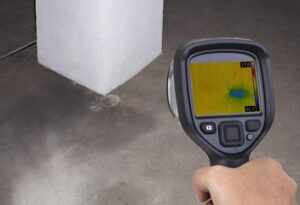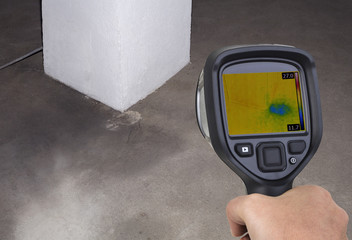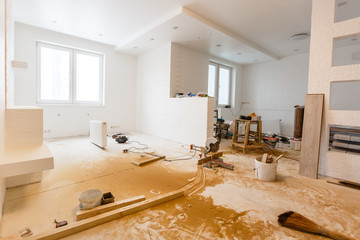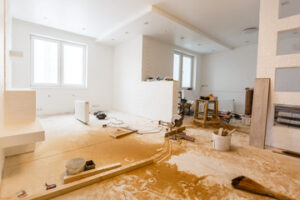Leak detection is an important aspect of pipeline management. It can prevent damage, save energy and money, and reduce environmental contamination.
Unexplained wet spots around the property, water gushing through pipes, and high water bills are clear signs of leaks but there can be other symptoms too. Like deteriorating building materials, higher levels of moisture in the air, and mold growth. Contact Freedom Plumbing for professional help.
Drones are everywhere, assisting in searches for hurricane victims, providing law enforcement and the military an eye in the sky during terrorist situations, and advancing scientific research in some of the most extreme climates on Earth. They’re also popular toys for hobbyists and a crucial tool for photographers. And now drones are proving to be well-suited for the tricky task of finding leaky oil and gas equipment.
Because they’re small, can be flown at a variety of distances and heights, and are capable of collecting data at high speeds, they make it easier to find the source of a leak than a traditional inspection team or even a helicopter. Plus, they can be deployed at a moment’s notice without organizing and preparing equipment or personnel.
In fact, some of the largest players in the natural gas industry already use drones to detect leaks in their pipelines. The reason? It makes good business sense.
Using drones to pinpoint leaks can also be more accurate than conventional detection systems. Because drones are able to fly closer to the equipment in question, they can isolate and confirm the location of a leak with greater precision than other tools.
The ability to gather real-time data at a much faster rate than a human team also improves efficiency. Plus, the cost of a drone is significantly less than that of a full inspection crew or a helicopter flight.
And there are a number of different drone sensor options available that are ideal for detecting methane leaks. These include ultrasonic, laser or lidar distance sensors, time-of-flight and chemical sensors. Visual sensors are another option, offering standard visual red, green and blue wavelengths, as well as thermal and hyperspectral capabilities. Accelerometers, gyroscopes, magnetometers and barometers are all common features on drones as well.
One research group has developed the first autonomous small drone swarms that can detect methane and other potential chemical threats. The drones work in “chainsaw” patterns to map rooms without the help of GPS and communicate with one another to avoid collisions and collectively scan spaces.
The researchers are working to adapt this technology to locate damaged nuclear reactors and other dangerous facilities. They’re also experimenting with ways to incorporate the drones into disaster response plans.
LiDAR
In a similar fashion to radar, lidar sends pulses of light just outside the visible spectrum at high speeds. These pings bounce off objects and reflect back, recording data about their size, shape, and location. The device then processes this information to create a detailed three-dimensional point cloud. The point cloud can be analyzed to find leaks, obstructions, and other abnormalities. The technology is useful in both land and aerial applications.
A LiDAR system comprises three main components: a laser source, a scanner, and a detector. The laser sends out a series of short bursts of light that travel through the air and are reflected by objects. The scanner — often a revolving mirror or a micro-electromechanical system (MEMS) — captures the returning light and directs it to the detector. The detector measures the time it takes for the light to return from the object and then to the scanner, enabling the system to calculate distances between the sensor and objects.
LiDAR is commonly used in topographical mapping and forestry, as well as for detecting forest fires. It can also be found in autonomous vehicles to enable perception and navigation workflows. In leak detection, the technology is able to scan the environment for anomalies and provide accurate 3D imaging of underground assets, pipelines, and other infrastructure.
In oil and gas, a company called Bridger Photonics uses gas mapping LiDAR to detect and quantify methane emissions. This equipment mounts to aircraft operated by aviation operator American Patrols and can cover large areas from the sky, triangulating methane plumes and their sources. The sensitivity of this system allows field crews to visit only the sites where methane concentrations suggest an issue, saving time and reducing risk.
In addition to a X, Y, and Z position, the data from a LiDAR point cloud can be “classified,” meaning that specific attributes are associated with each of the points. For example, the type of vegetation each reflected off of is recorded. This information can be used to flag locations that should be inspected by hand or requiring further investigation.
Acoustic Leak Detectors
Acoustic leak detection relies on sound waves to locate leaks in pressurized pipes. When water leaks it creates a whooshing noise that can be picked up by specialized detectors that are designed to zero in on this specific sound. Acoustic detectors are often combined with other technology to help pinpoint leak locations.
For example, LiDAR is able to detect a pipe’s location by measuring the time it takes for laser pulses to reflect off objects. It then uses this information to create an image of the surrounding area. When coupled with acoustic data, this allows technicians to find the exact spot where the leak is occurring and quickly fix it.
A leaking toilet, bathtub, or kitchen tap can waste thousands of gallons every year and adds up to high water bills for homeowners. This is why acoustic leak detection methods are crucial to helping prevent these costs from mounting over time. Acoustic detection systems rely on sound to find leaks by listening for the rhythmic pulsation that the water supply system makes as it closes and opens valves. Once a rhythmic pattern is detected, the sensor will send an alert to the technician who can then follow the signal to the source of the leak.
Acoustic sensors can also be integrated into water meters to provide constant monitoring for developing leaks. This helps to save valuable time for technicians who may otherwise have to perform manual surveys on a daily basis. In a pilot trial period, for instance, Echologics found six previously unknown leaks using acoustic sensors integrated into flowIQ 2200 water meters.
It is important to remember that acoustic sensors can only hear sound in the range of 3 or 4 feet deep. This means that while it can be used in many situations, it will not detect leaks beneath the surface or in the groundwater. Sandy soils and loose, soft soils do not transmit sounds very well. In contrast, hard, compacted soils and rocky sites transmit acoustic signals better.
To use an acoustic leak detection system, the microphone of the device should be placed over the suspected leak site. The sound is then measured by the acoustic sensor and transmitted to a screen that displays the results. A correlation screen will then display the strongest acoustic peak, indicating the leak position.
Temperature Sensors
Temperature sensors are vital in a wide variety of industries and applications. They’re all around us and used in our everyday lives, from medical devices to electrical appliances in the home and commercial building HVAC systems. These sensors keep an eye on the temperature of different solids, liquids and gases to ensure they remain at a safe level of use. They’re also critical to maintaining a stable environment for many industrial machinery and manufacturing processes, as well as power plants and other industrial environments.
Different temperature sensors are used to measure different temperatures. For example, RTD sensors are made from pure metals that change their resistance based on temperature in a predictable way. Thermistors, on the other hand, are made from ceramic or polymer materials whose resistance decreases with increasing temperature. RTDs are generally more accurate and are capable of measuring across wider temperature ranges than thermistors.
Thermocouple sensors are a type of temperature sensor that operates by generating voltages based on differences between two dissimilar metals that connect at different points in the sensor. They are used for high-precision and accurate temperature measurement with the ability to work over a wide range of temperatures, ranging from -200°C to over +2000°C. Depending on the temperature range, thermocouple sensors may require calibration to achieve the desired performance.
In addition to preventing damage from water leaks and flooding, smart temperature sensors can help prevent the spread of harmful microbes in a building. They can monitor the temperature of different areas in a building, alerting maintenance staff when they need to take action. They can also shut off the water supply when necessary to stop the spread of mold or mildew, preventing costly repairs and minimizing health risks for building occupants.
While proactive steps like installing sensors and monitoring your home’s water and air conditions can greatly reduce the risk of property damage from unforeseen events, it’s important to make sure you have comprehensive homeowner’s insurance coverage. This type of coverage can cover your repair costs, replace damaged belongings and offer liability protection if someone is injured on your property.


